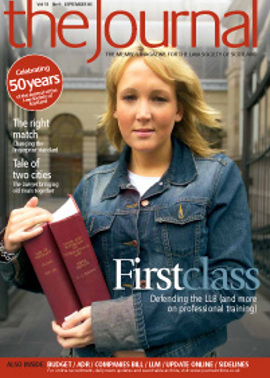On your marks...

Following a consultation earlier this year, “Relative Ground for Refusal – The Way Forward”, UK Trade Marks Registry (“the Registry”) is to reform the way it examines applications for UK trade marks, with likely effect from October 2007.
Currently, the Registrar cites existing trade marks which are confusingly similar to any new application and the applicant must overcome this objection. Under the new system, recommended by 43% of respondents to the consultation (according to the Registry’s response document, published 2 August 2006), the Registrar will still search for confusingly similar marks, but instead of objecting, will simply notify the owner of the pre-existing mark. The onus will be on that owner to object if there is risk of confusion.
Why the change?
There are three types of protected registered trade mark in the UK: (a) UK national trade marks, obtained from the Registry and enforceable only in the UK; (b) Community trade marks (“CTMs”) obtained from the Office for Harmonisation in the Internal Market (OHIM) in Alicante and enforceable throughout Europe; and (c) international trade marks which have designated the UK or EC for protection.
A trade mark must be distinctive, not offensive and must not misdescribe the goods/ services for which registration is sought, or it will be refused on “absolute grounds”: Trade Marks Act 1994, s 3. In addition, the mark must not be confusingly similar with a pre-existing trade mark or it will be refused on “relative grounds” (s 5).
At present the UK Registrar automatically cites conflicting earlier trade marks (including CTMs and international trade marks (EC and UK): Act, s 6), without involving the earlier trade mark owner. An application succeeds only if the applicant can persuade the Registrar that the marks do not conflict, or prove consent of the earlier owner.
In contrast, CTM applications are only refused on relative grounds if the owner of a conflicting earlier mark successfully opposes the application. OHIM does not cite conflicting applications as a ground for refusal. Indeed no other EU countries apart from Ireland examine applications for national trade marks on relative grounds. As a result, it is currently more difficult to obtain a UK trade mark than a CTM, despite the narrower scope of geographical protection.
In addition, many registered trade marks are not actually used. If they are unused for five years they can be revoked (Act, s 46). However the Registry has no information on the use being made of trade marks. Accordingly, it can cite objections on the basis of marks which are liable to revocation for non-use.
Implications of the change
The new procedure will undoubtedly result in a more equitable balance between applicants for a new CTM and a new UK trade mark. In addition, many believe that the application process for new UK trade marks will prove quicker and cheaper than at present. The burden on existing rights owners will undoubtedly increase, as the onus will be on them to object, which is likely to be costly and time-consuming. However this may lead to a more realistic market assessment of which applications should be opposed than is the case with the current automatic citation procedure.
Although some existing rights owners already monitor applications, most objections tend to surface after the new mark has been registered and use has begun. Notification of potential conflicts before they are registered may prompt the resolution of such situations prior to registration. The Registry search will not however pick up potential conflicts with earlier unregistered rights (essentially goodwill in a trading or product name), which can provide a relative ground of objection under s 5(4), so there is potential for post-registration challenges. Also, some existing rights holders may continue to “wait and see” how the trade mark impacts on their business in practice prior to challenging its validity. But a trade mark owner who does not object to an application should take steeps to ensure they do not get caught out by s 48(1), which provides that failure to object to a registered trade mark of which the owner has knowledge for five years post-registration removes the right to a later challenge. Registry notification may make acquiescence harder to refute.
Closer alignment with the CTM procedure may further reduce the number of applications for UK trade marks as compared to CTMs. However the UK trade mark will still have value as a comparatively quick and cost-effective means of obtaining UK rights without facing objections from rights owners throughout Europe.
Further consultation will take place on the detailed rules to be put in place to implement the new procedure. The Registry will have to formulate an appropriate notification procedure and also consider whether any changes to the current UK opposition procedure will be required in order to ensure it is appropriate for use in future. Given the radical departure from longstanding UK practice, the draft rules are awaited with interest.
Susan Snedden, IP & Technology Department, Maclay Murray & Spens
In this issue
- Sincere thanks are due
- From the grass roots
- Training solicitors and teaching law
- Survival of the fittest?
- A new print job
- Plenty more besides
- That's settled, then
- East meets west
- A shot in the arm
- Tapping into CPD Online
- Master trainee
- Glitch hunt, not witch hunt
- A caveat on witnesses
- Victories for tenants?
- On your marks...
- Big bill for business
- Ripple effect
- How fair is fair?
- Scottish Solicitors' Discipline Tribunal
- Website reviews
- Book reviews
- Spinning plates
- Sending the right signals






